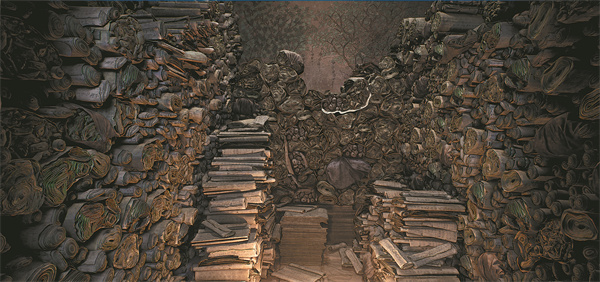

In-game learning
Just like in a game, the audience plays the role of a time-traveling explorer and, under the guidance of Mogao Caves' digital ambassador Jiayao, participates in, and witnesses the passing of the millennium, from when the cave was built, sealed and rediscovered, to how the relics were lost or scattered, and reunited virtually.
During the process, the audience will meet eight non-player characters, all real historical figures, including Hongbian and Wang, the controversial Taoist priest.
"The Digital Library Cave is a combination of art, academic research and technology," says Li Hang, vice-president of Tencent's Corporate Marketing and Public Relations, adding that it lowers the threshold required to learn about the cave and the relics, therefore extending the reach of the site to a wider audience.
According to Li, the project has facilitated the creation of a "digital twin" of the 1,600-meter-long external cliff face of the Mogao Caves and its 16th and 17th caves that is accurate to the millimeter, as well as exact digital re-creations of the murals, statues and relics housed there.
The surroundings are dotted with indigenous plants, and the exploration experience is accompanied by pieces of background music played with traditional instruments like pipa (a four-stringed lute), bili (a double-reed pipe) and drums, all of which can be seen in the murals at Dunhuang.
Alongside the use of high-definition digital scanning, the project also involves physically based rendering, a technical approach for better game rendering, to realize dynamic lighting conditions.
For example, Li says, the passages and murals in the digital caves are illuminated by the sun in its position at 10 am, whereas in reality, to facilitate conservation, the caves are kept in low light, and visitors have to scrutinize the murals and statues simply with what little light emanated from outside or with the help of a flashlight.
Game technologies have shown great potential in preservation, display and research of cultural relics, says Cui Xiaochun, vice-president of Tencent's Interactive Entertainment Business Group, which participated in the development of the digital caves.
He says, they've been accumulating a set of tools and production methods to form a paradigm that can involve more cultural institutions nationwide and accelerate the digital conservation of relics and creative applications of these digital legacies.